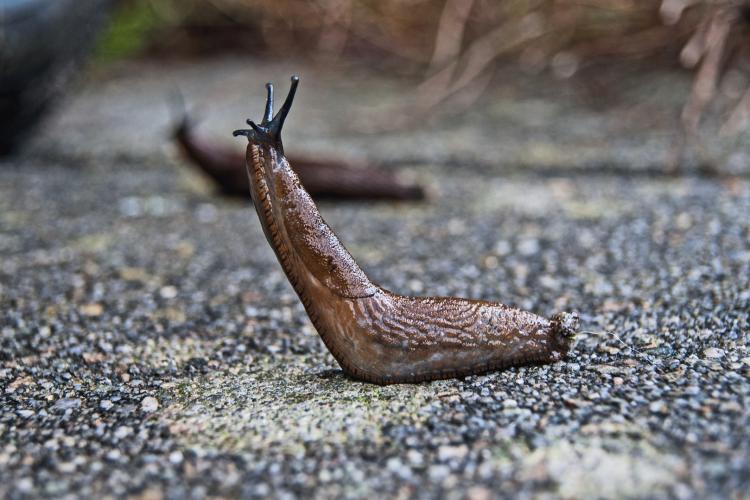Time to hug a slug?

The RHS recently announced that it would no longer regard slugs and snails as pests. This followed on from RHS research which identified that only 9 out of the 44 slug species actually ate plants. The RHS regards slugs as playing an ‘ important role in planet friendly gardening and maintaining a healthy ecosystem’.
And it's the slugs role in the ecosystem which has also prompted the government to ban the outdoor use of the slug control chemical metaldehyde from the end of this month. Metaldehyde not only kills slugs but also kills other important wildlife such as toads, frogs, hedgehogs and birds. These chemicals can also be toxic to pets.
While hugging a slug may be going too far, how can we as gardeners keep slugs away from our plants, without resorting to chemical killing?
We outline a number of alternatives to support slug control. But you may have to use a mix and match approach, rather than just rely on one method for these to be effective.
Slugs love compost heaps
Slugs act as great garden waste recyclers. So rather than kill slugs, move them to a compost heap where they may thrive without doing harm to tender plants.
Slug Barriers
A range of materials can be used to create a slug barrier. You can make a cloche from old drink bottles to cover your plants and prevent slugs from getting to them. Or you might sprinkle broken plant pots and crockery, ash, crushed egg shells or bark around your plants. Remember to continue to check your barriers to ensure they remain effective. Rehome any slugs you find.
Lettuce and cabbage leaves
Leave a few lettuce and cabbage leaves for slugs to feed on or hide beneath. Check regularly and dispose of any slugs you find. They’re likely to find this tastier than your new plants.
Damp cardboard
Leave a piece of damp cardboard outside and slugs will find and hide underneath it. Check regularly and dispose of any slugs you find.
Hairy plants
Slugs don’t like plants with hairy surfaces, such as STACHYS byzantina, more commonly known as Lamb’s ear. Consider whether you can change your planting scheme to prevent a problem from occurring in the first place.
Sacrificial plants
Plant a few varieties which slugs find tasty next to your favourite plants and let them eat to their hearts content. Hopefully they’ll eat the tasty ones and leave your others alone.
If you can’t face the capture, pick up and move a slug approach, here are a few other suggestions for slug control. Unfortunately, all of these result in death to the slug.
Slug traps
Made from yoghurt pots and commonly filled with beer or milk, slugs will climb up and fall in and drown.
Biological control
Slow worms, frogs, toads, hedgehogs, centipedes, ground beetles and fireflies all eat slugs, but introducing these species may not be desirable or practical due to the other negative impacts this may have upon other species.
Nematodes are, however, becoming increasingly available as a form of biological control. From a packet and a paste, these will eat the slug from the inside and have little if any negative impact upon the habitat or other species.
Other slug pellets
If all else fails, chemical treatments which include ferric phosphate can be bought and applied. These are less toxic to other wildlife and domestic pets if applied in small doses and regularly checked.
If you choose slug pellets, try the Rosy method of using a square glass bottle (some coffee jars are square) laid on its side with half a teaspoon full of the pellets at the bottom of the jar. It’s better to use the jar method, rather than spreading slug pellets around the garden as pellets are a slug attractant. If you sprinkle pellets all over the garden the slugs will travel all over the garden too. Remember to empty the jar regularly as this will trap and kill them.
